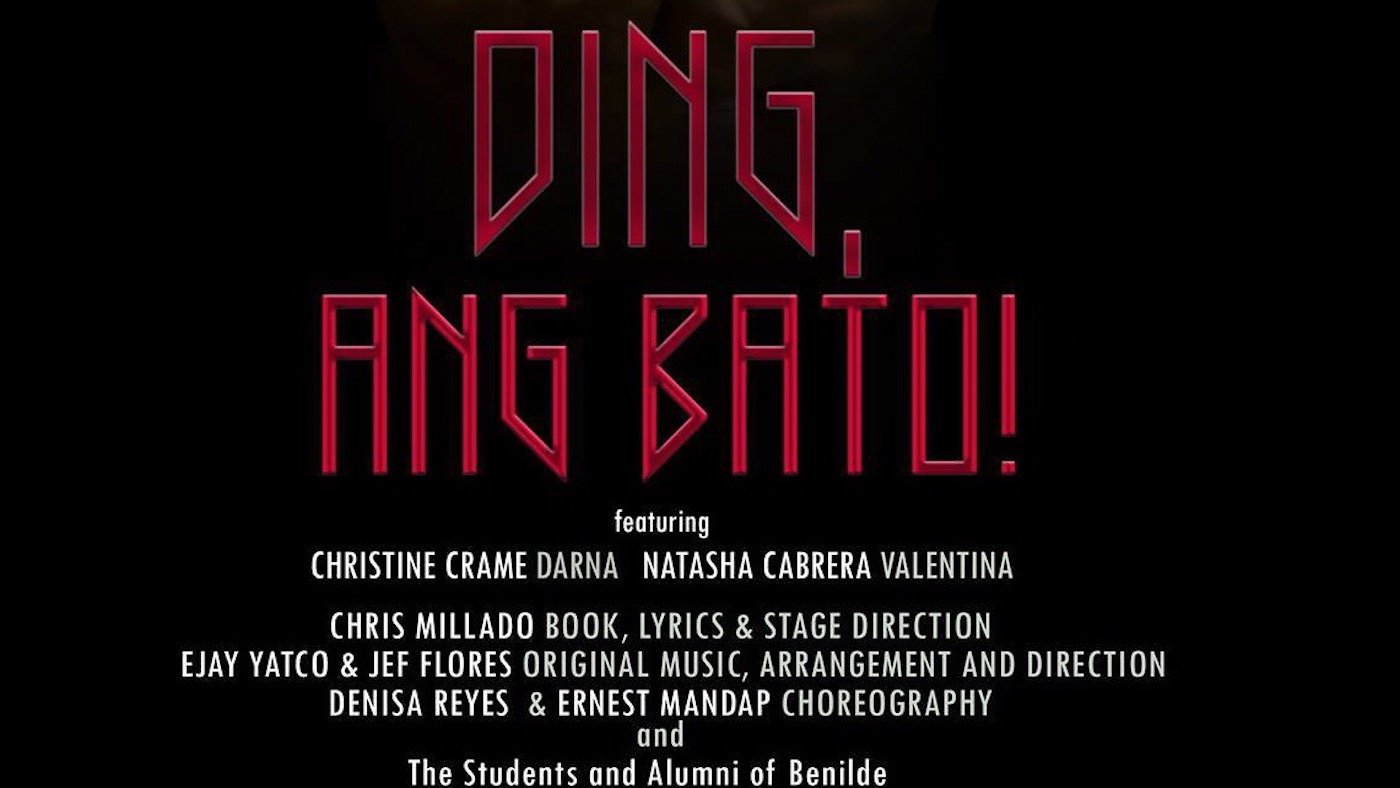
REVIEW: In “Ding, ang Bato!”, dancing is serious but the politics is casual
“Ding, ang Bato!” is a tricky thing. It presents itself as a technical marvel, with a confluence of different theater techniques that come together to form a strong start. Ding (Carlos Serrano III) is someplace magical, and–being deaf–he signs, “Tabi-tabi po!” He is soon joined by enkantos clad in flowy costumes that seem to mimick brambles.
That first dance (choreography by Denisa Reyes and Ernest Mandap) was enchanting, combining the movement of sign language with contemporary dance. They were telling the story of how Ding got hold of Darna’s bato, and while the storytelling wasn’t too crisp to be completely understandable, it was easy to get the gist.
And then it goes–quite steadily–downhill from there.
“Ding, ang Bato!” is Chris Millado’s reimagining of Darna’s origin story– one where Ding finds the stone somewhere around a balete tree, with Filipino folklore being a source of the stone’s magic. Valentina (Lea Roque at the beginning)’s super villainy starts when she is revealed to be bald, and then bullied for it. There is a typhoon and Narda (Stacy Abarca) finally transforms into Darna (Christine Crame) to save the townsfolk from drowning. The people start worshipping her, much to Ding’s dismay.
The second act pivots to the same overused tropes to date it firmly in 2018. The story shifts in and out of today’s politics, the characters’ personal arcs, Darna and Valentina’s classic rivalry, and coveting the stone. The show, billed as told in the perspective of Ding, it is Valentina (Natasha Cabrera) whose backstory is explored, and it is Narda who learns the lesson: that her powers don’t come from the stone, they come from within.
If the story sounds confounding, it’s because it is. One scene ends and another begins, with little flow between them. It is also, of course, casually political. At least, making mentioning buzzwords like “human rights”, “huwag tularan”, “extra judicial”, “change is coming” as punchlines to draw out an easy laugh. We live in politically problematic times, and if a work isn’t somehow (however flippantly, capriciously) political, is it even relevant?
It seemed to me that the show went through some lengths to appeal to that ever-elusive theater market: millenials. There were rap numbers! videogame simulations! social media savvy baddies! oh my!–done all in the service of entertainment, narrative be damned.
It’s important to note that “Ding, ang Bato!” is a dance musical, and made by the Benilde Arts and Culture Cluster’s dance program. The show is full of overextended dance numbers because it had to be, but some are quite enthralling, if you’re not trying too hard to follow the plot.
Most of the performers were students, with the exception of Crame and Cabrera, who were brought in to steal scenes and that they did. While Crame wasn’t given much to do beyond posturing in that Darna costume, her infrequent appearances were met with cheers from the audience. Cabrera, who is no stranger to big, hilarious villains brought that very energy to her Valentina.
The musical’s young cast offered little depth to their performances, though Serrano did possess an incorruptible, child-like charm as Ding, and Abarca and Paula Paguio have beautiful singing voices. Paguio, who played Lola Isabel, didn’t seem to bother with moving like an old woman, dancing just as energetically as the twenty-something cast.
Tuxqs Rutaquio and Joee Mejias’s production design was undoubtedly the show’s strong suit and made the stage feel grand and immersive. There are shadow plays (Sigmund Pecho), layered lights (designer is Joaquin Jose Aranda, who also served as technical director), set pieces, and stylized costumes depicting nature that grounded the story to its mythical roots, and even captured how the show is more symbolic than straightforward.
Sound designer Aji Manalo with musical directors / composers Ejay Yatco and Jef Flores provided genre-crossing music that felt fresh yet still grounded in musical theater. The show’s songs largely felt tacked onto the plot, but they were beautiful nontheless. While the story being told in Ding’s POV isn’t so clearly executed, sign language was seamlessly integrated into the dialogue and it made for dynamic movement between characters when nothing else was going on.

